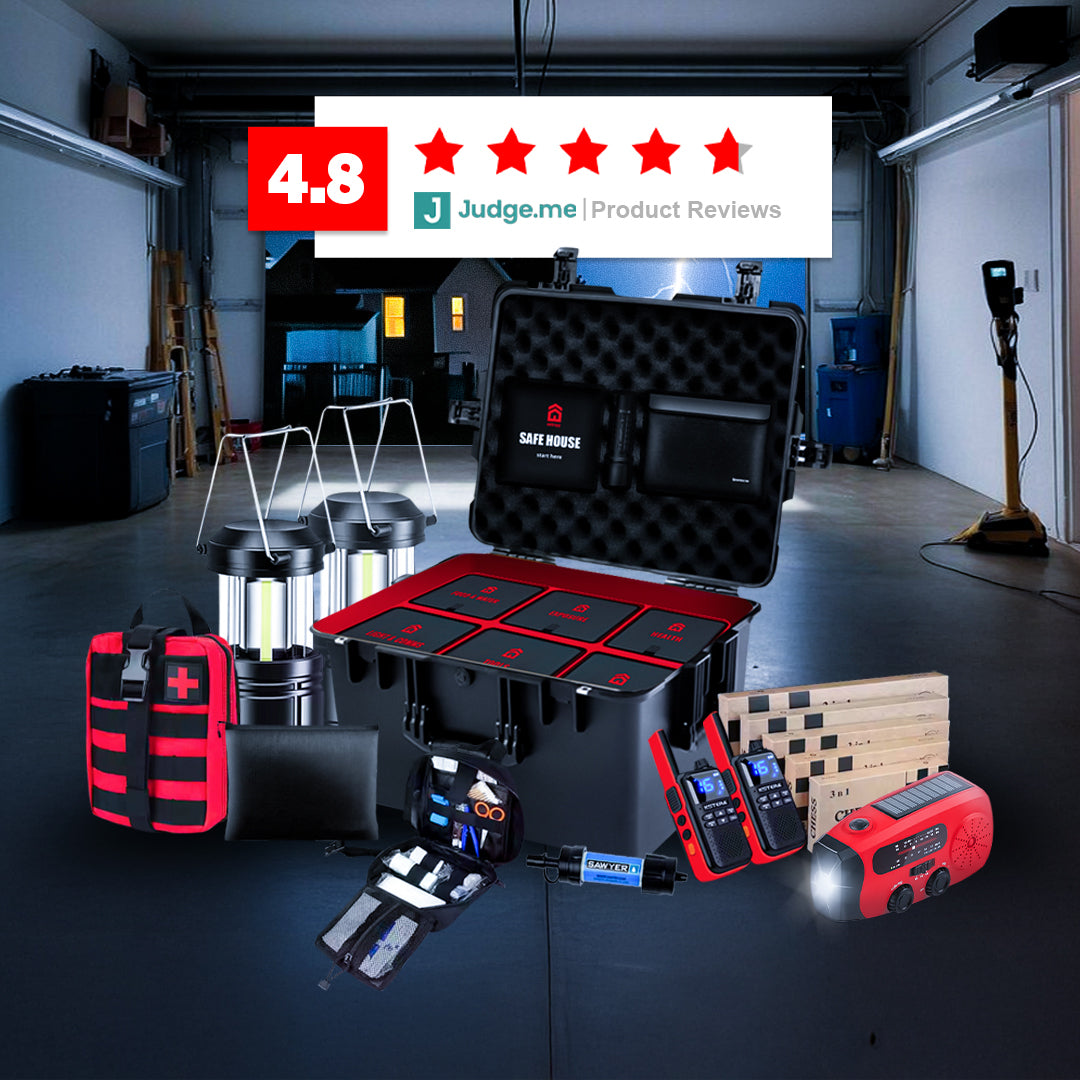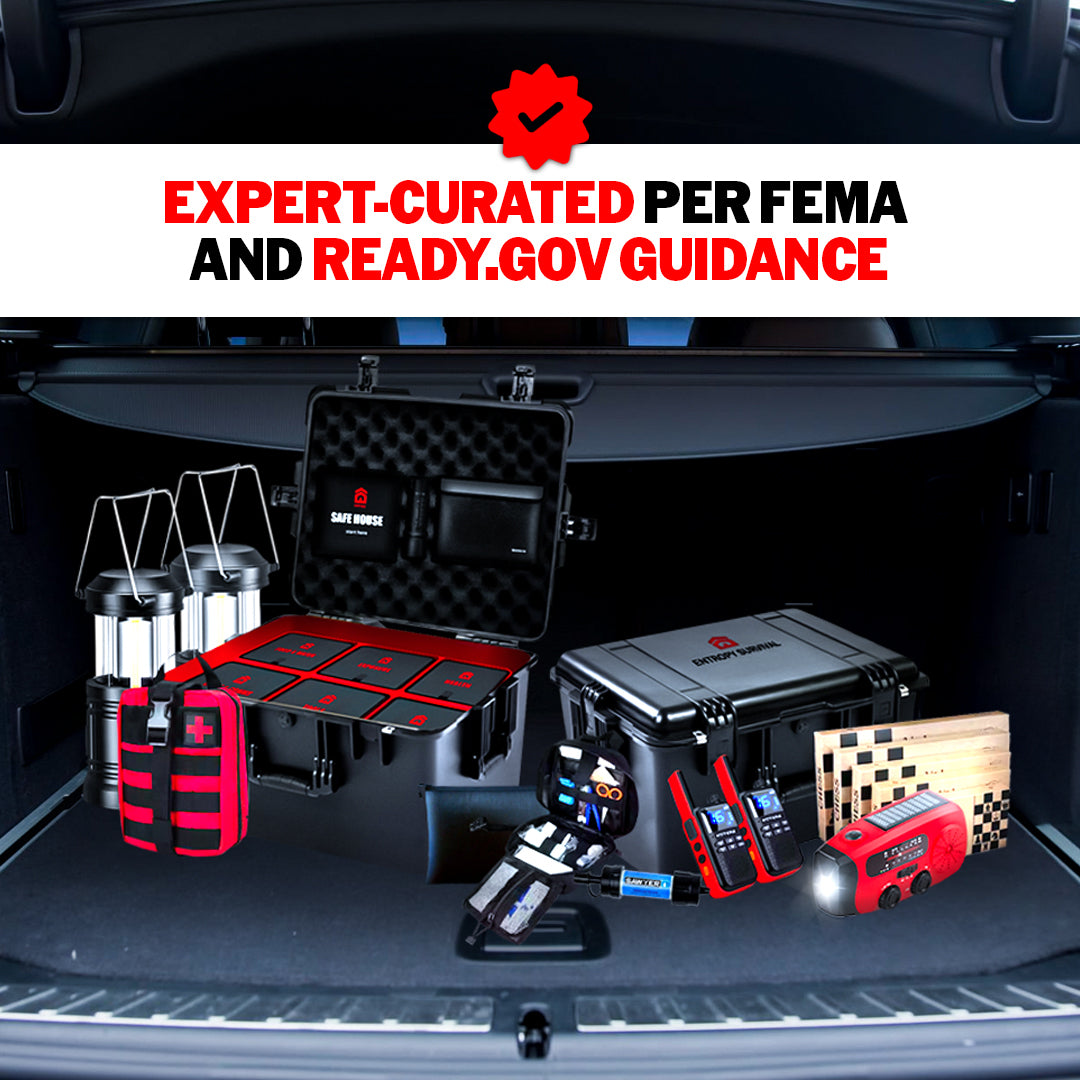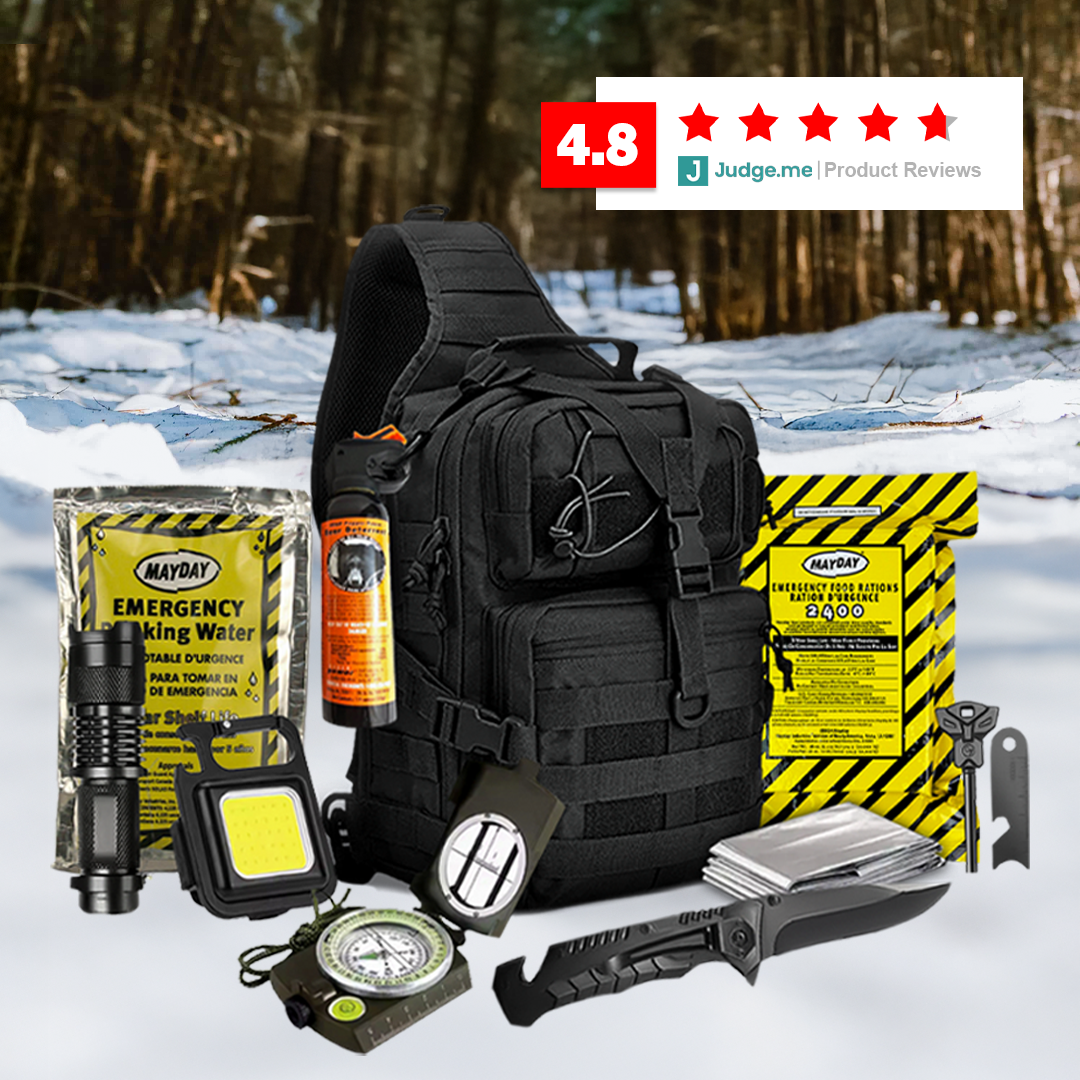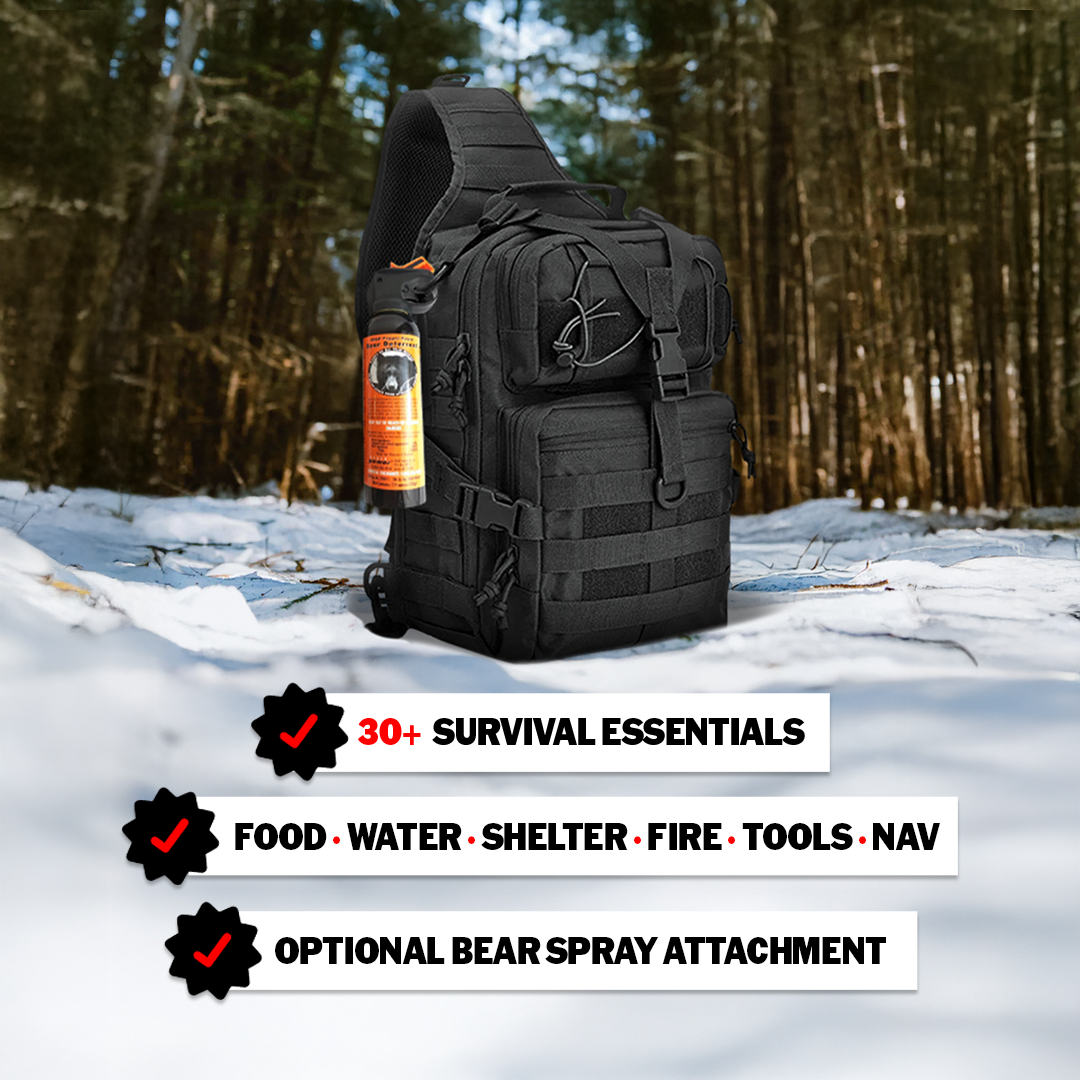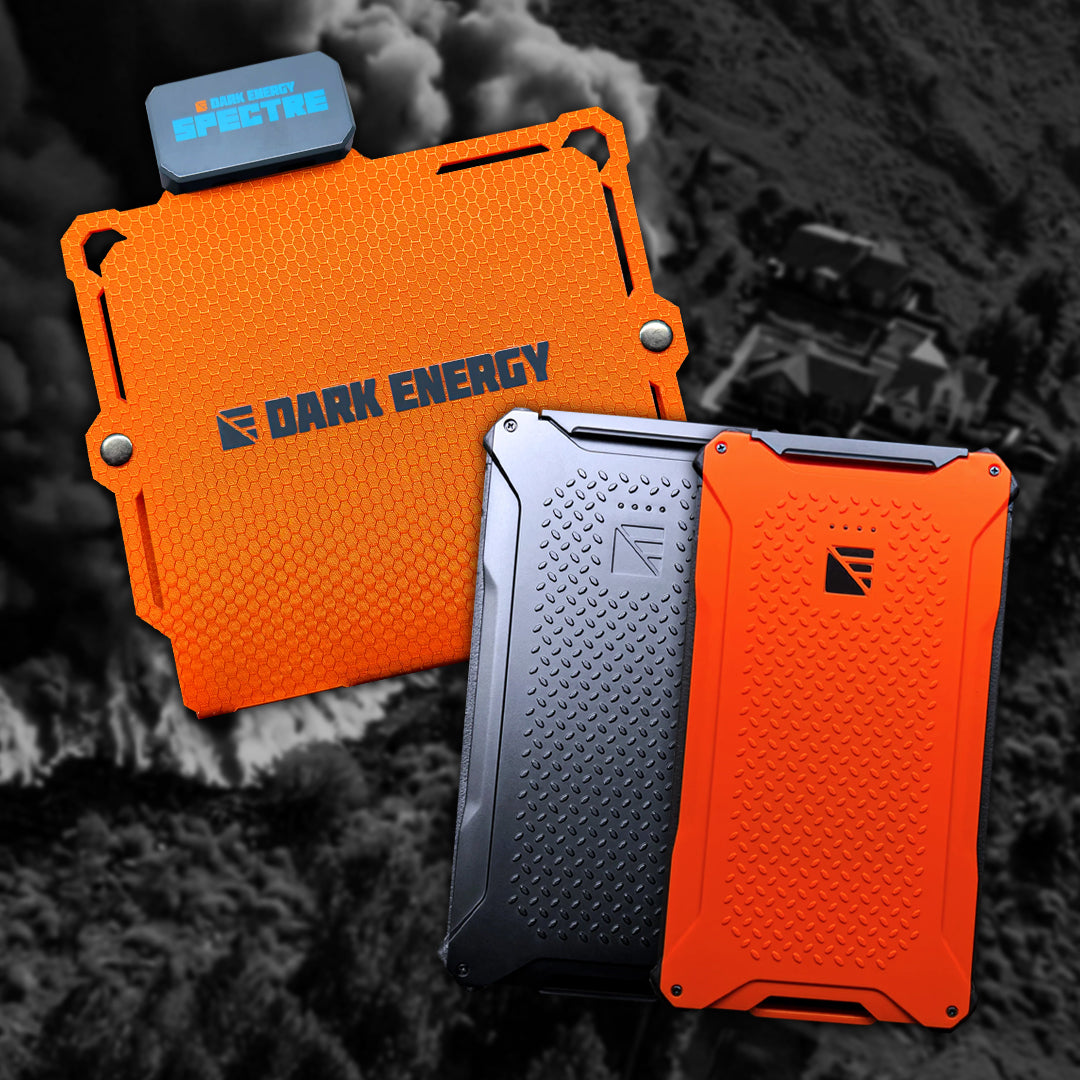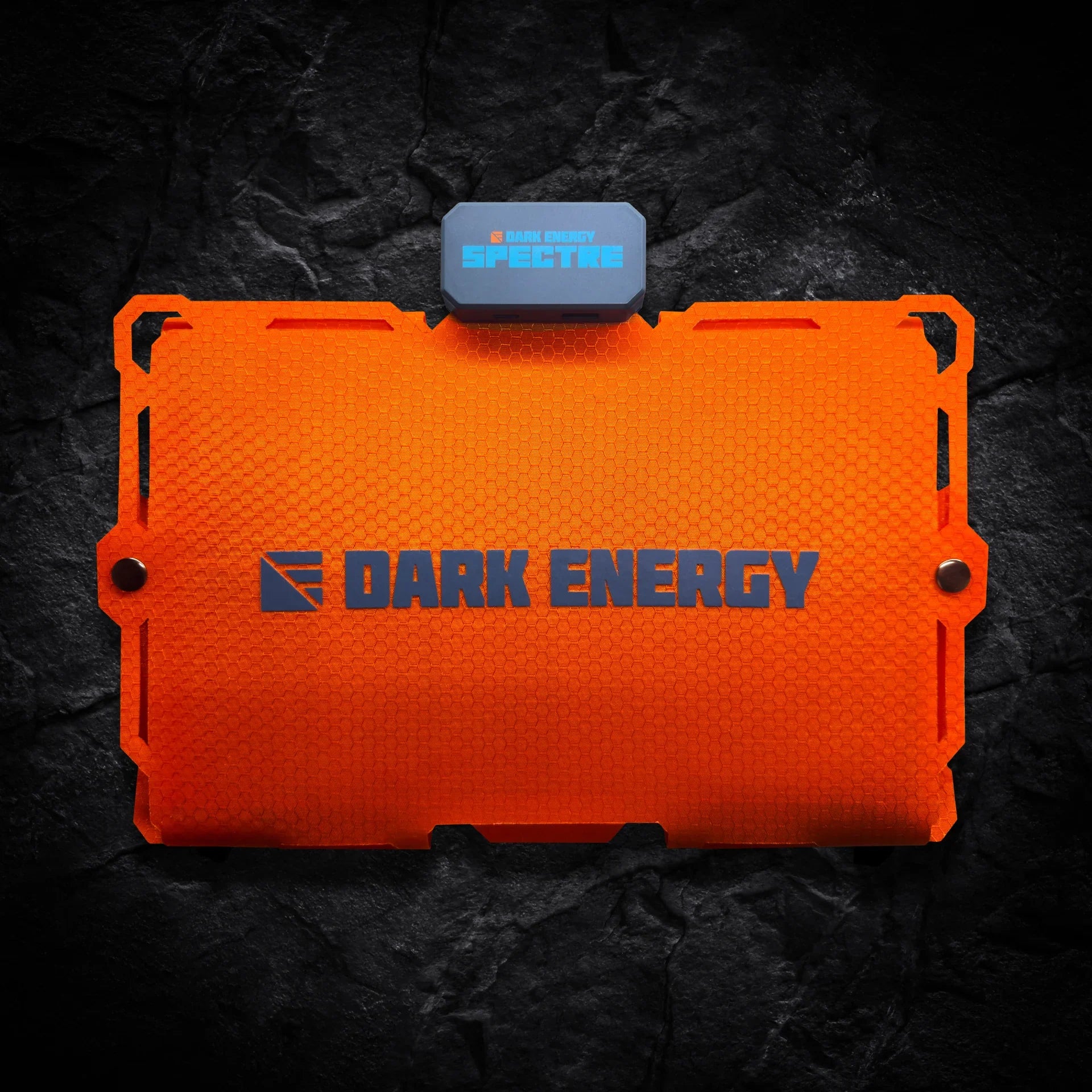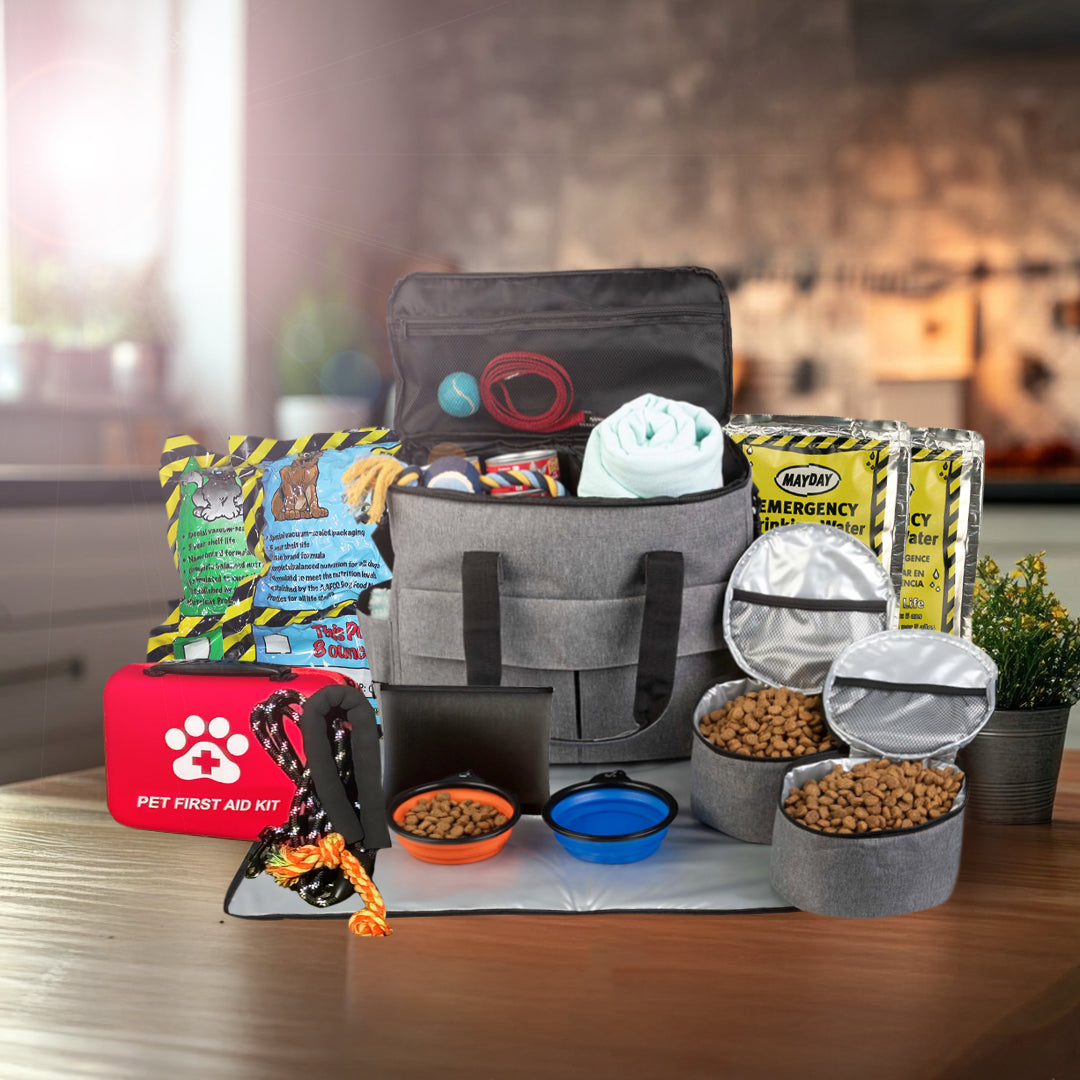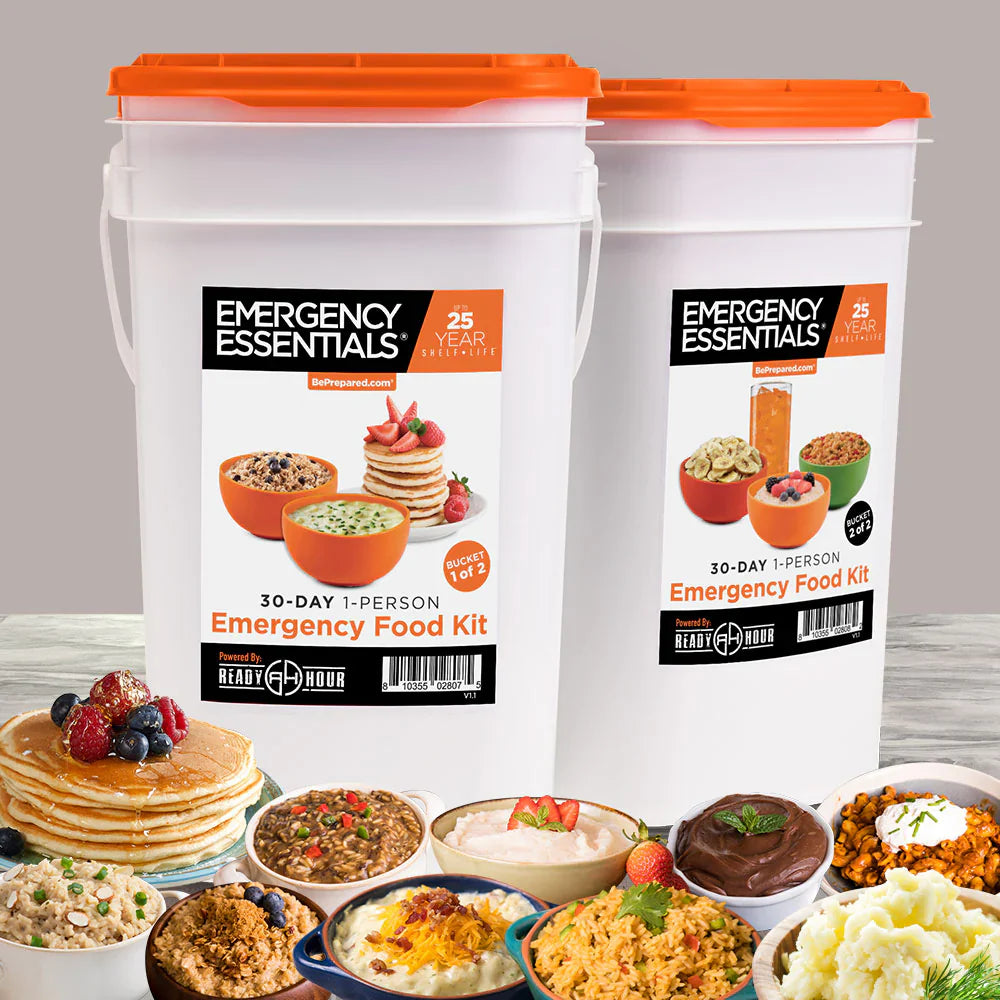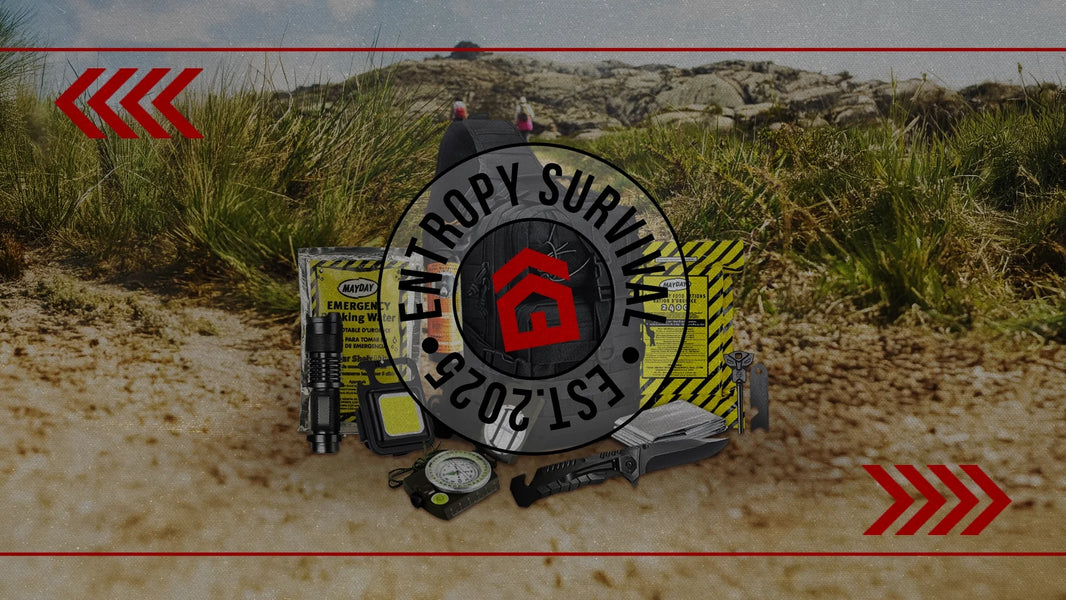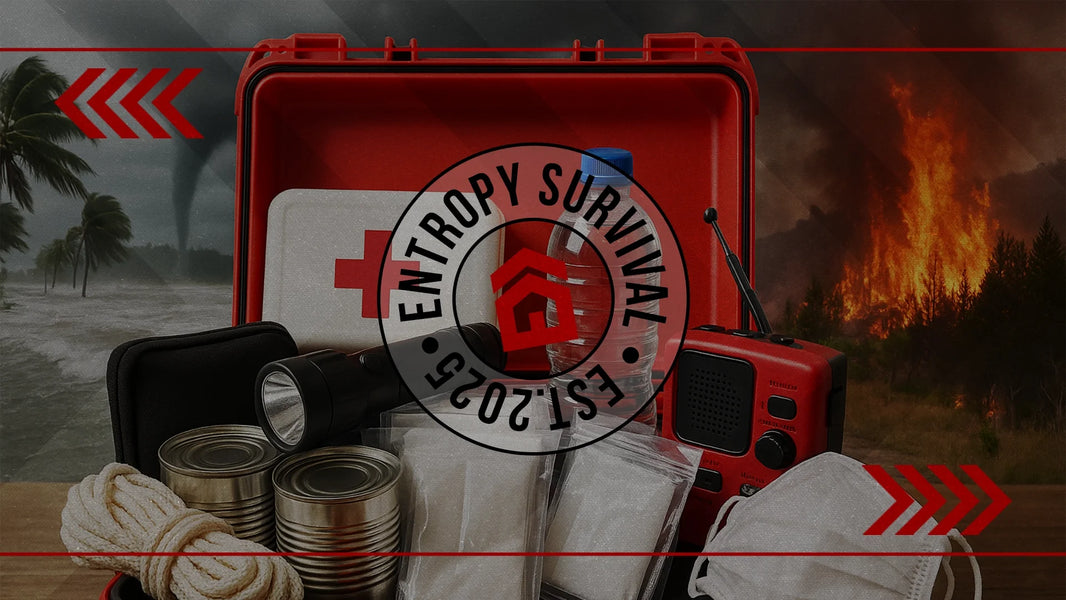Understanding the Urban Survivalist Mindset
Urban survivalists represent a growing community of city dwellers who recognize that emergency preparedness isn't just for those living in remote wilderness areas. These forward-thinking individuals understand that some of the most challenging survival scenarios can unfold right in the heart of our bustling metropolitan areas. From natural disasters that knock out power grids to supply chain disruptions that empty store shelves overnight, urban environments present unique challenges that require specialized knowledge and preparation.
The term "urban survivalist" encompasses anyone who actively prepares for potential emergencies within city environments. Unlike their wilderness counterparts who might focus on building shelters from natural materials or hunting for food, urban survivalists must navigate a complex landscape of concrete, steel, and millions of people. They understand that being prepared in a city means thinking differently about resources, mobility, and community.
What sets urban survivalists apart is their recognition that cities, despite their apparent abundance of resources, can become incredibly vulnerable during emergencies. When Hurricane Sandy hit New York City in 2012, millions found themselves without power, heat, or access to basic supplies for weeks. The COVID-19 pandemic further highlighted how quickly urban supply chains could be disrupted, leaving even well-stocked cities struggling to meet basic needs.
At Entropy Survival, we've witnessed this growing awareness firsthand. Our CEO, an Army veteran who understands survival from both military and civilian perspectives, has observed how urban preparedness requires a fundamentally different approach than traditional wilderness survival. The challenges of apartment living, limited storage space, and dense populations create unique obstacles that demand innovative solutions.
Urban survivalists don't just stockpile supplies; they develop a comprehensive understanding of their environment, build networks within their communities, and maintain the mental flexibility needed to adapt when normal systems fail. They recognize that in a city of millions, individual preparedness must be balanced with community resilience.
The Fundamental Differences Between Urban and Wilderness Survival
Understanding the distinction between urban and wilderness survival is crucial for anyone serious about emergency preparedness. While both share common principles like securing water, food, and shelter, the methods and priorities differ significantly based on environment.
In wilderness survival, your primary concerns often revolve around exposure to the elements, finding natural water sources, and creating fire for warmth and cooking. You might build a debris hut for shelter or fashion tools from natural materials. The environment, while potentially harsh, is relatively predictable in its challenges.
Urban survival operates under entirely different rules. Instead of building shelter from branches and leaves, you might need to reinforce your apartment against civil unrest or create a safe room during a home invasion. Rather than purifying water from a stream, you could be collecting rainwater from rooftops or treating contaminated municipal water. The concrete jungle provides different resources and presents different threats.
Population density becomes both an asset and a liability in urban scenarios. While cities offer more resources like hospitals, stores, and services during normal times, they also create competition for those same resources during emergencies. A wilderness survivor might go days without seeing another person, but an urban survivalist must navigate the complex dynamics of thousands or millions of stressed, potentially desperate people.
Urban environments also present unique hazards rarely encountered in wilderness settings. Chemical spills from industrial facilities, structural collapses from aging infrastructure, and the rapid spread of civil disturbances through dense populations all require specific preparation strategies. Urban survivalists must understand how to shelter in place during chemical emergencies, navigate buildings that might become compromised, and move through crowds safely during evacuations.
The time scales involved also differ dramatically. Wilderness survival often focuses on immediate needs like staying warm through the night or finding water within hours. Urban survival scenarios might unfold over weeks or months, requiring sustained resource management and long-term planning. The 2008 financial crisis, for example, created urban survival challenges that lasted years in some communities.
Communication takes on heightened importance in urban environments. While a wilderness survivor might use signal fires or mirrors to attract rescue, urban survivalists need robust communication networks to coordinate with family members across the city, receive emergency broadcasts, and potentially organize community response efforts. This is why products like those in Entropy Survival's Safe House Kit include advanced communication tools designed specifically for urban emergency scenarios.
Essential Urban Survival Skills Every City Dweller Should Master
Developing practical urban survival skills goes far beyond stockpiling emergency supplies. True urban survivalists cultivate a diverse skill set that enables them to adapt and thrive regardless of what challenges their city might face.
Situational Awareness and Threat Assessment
The foundation of urban survival lies in developing exceptional situational awareness. This means constantly observing your environment, understanding normal patterns of activity, and recognizing when something seems out of place. Urban survivalists train themselves to notice everything from unusual crowd behavior that might indicate an emergency to subtle changes in their neighborhood that could signal declining security.
Effective threat assessment involves understanding the specific risks your city faces. Coastal cities must prepare for hurricanes and flooding, while those near fault lines focus on earthquake preparedness. Cities with significant industrial infrastructure face different chemical hazards than those in agricultural regions. Understanding your local risk profile allows you to prioritize your preparation efforts effectively.
Resource Identification and Alternative Procurement
Cities contain abundant resources, but urban survivalists know how to identify and access them when conventional supply chains fail. This includes knowing where to find alternative water sources like building maintenance areas, understanding which urban plants are edible, and recognizing opportunities for trade and barter within your community.
Successful urban survivalists also develop relationships with local business owners, building supers, and community leaders who can provide access to resources during emergencies. They understand that in crisis situations, social connections often prove more valuable than stockpiled supplies.
Urban Navigation and Movement
When GPS fails and street signs are damaged, urban survivalists can still navigate their city effectively. This includes understanding cardinal directions using sun position and shadow patterns, memorizing multiple routes between key locations, and identifying landmarks that would remain visible even during infrastructure damage.
Movement skills also encompass understanding crowd dynamics and how to move safely through areas of civil disturbance. Urban survivalists know how to blend in with crowds when necessary, how to avoid areas where tensions might escalate, and how to move quickly but safely during evacuations.
Basic Medical and Trauma Response
While wilderness first aid focuses on treating injuries with improvised materials, urban first aid must address different challenges. Urban survivalists need to understand how to treat injuries from debris and broken glass, how to respond to chemical exposure, and how to provide care when professional medical services become overwhelmed.
The density of urban populations also means that knowing basic trauma response could save multiple lives during a single incident. Understanding how to control bleeding, manage shock, and coordinate with emergency services becomes crucial when accidents or attacks affect multiple people simultaneously.
Communication and Information Management
Reliable communication networks become lifelines during urban emergencies. Urban survivalists maintain multiple communication methods, from battery-powered radios to satellite communicators that work when cell towers fail. They understand how to monitor emergency broadcasts, coordinate with family members, and even participate in amateur radio networks that provide critical information during disasters.
Information management involves knowing how to verify the accuracy of emergency information and avoid the panic that can spread through social media during crises. Urban survivalists develop trusted information sources and understand how to distinguish reliable emergency communications from rumors and misinformation.
Common Urban Emergency Scenarios and Response Strategies
Understanding the specific types of emergencies most likely to affect urban areas allows survivalists to prepare more effectively and respond appropriately when disasters strike.
Power Grid Failures and Infrastructure Collapse
Extended power outages represent one of the most common and challenging urban emergency scenarios. When electricity fails, cities quickly reveal their dependence on electronic systems for everything from water pumping to food refrigeration. Urban survivalists prepare for these scenarios by maintaining backup power sources, understanding how to keep food safe without refrigeration, and developing non-electric alternatives for essential functions.
During the 2003 Northeast blackout, which affected over 50 million people across multiple cities, those who were prepared managed the crisis far better than those caught off-guard. Urban survivalists maintain battery-powered lighting, backup communications, and enough food and water to remain comfortable during extended outages.
Infrastructure collapse can also affect transportation, water treatment, and waste management systems. Urban survivalists understand how to treat water when municipal systems fail, how to manage sanitation when sewage systems are compromised, and how to move around their city when public transportation shuts down.
Natural Disasters in Urban Settings
Natural disasters affect cities differently than rural areas, often with more complex cascading effects. Earthquakes in urban areas not only cause building damage but can rupture gas lines, contaminate water supplies, and create massive traffic jams that trap residents. Urban survivalists prepare for these scenarios by securing their living spaces, maintaining emergency supplies that could sustain them during extended rescue operations, and understanding evacuation routes that remain passable during disasters.
Flooding in cities creates particularly dangerous conditions because urban drainage systems can quickly become overwhelmed, and contaminated water can spread disease rapidly through dense populations. Hurricane Katrina demonstrated how quickly urban flooding can isolate entire neighborhoods and overwhelm rescue capabilities.
Urban survivalists in flood-prone areas maintain waterproof storage for essential supplies, understand how to signal for rescue from upper floors or rooftops, and know how to safely navigate flood waters when evacuation becomes necessary.
Civil Unrest and Security Challenges
Dense urban populations can experience rapid escalations of civil unrest that create dangerous conditions for residents. Urban survivalists understand how to recognize early warning signs of potential violence, how to secure their homes against intrusion, and how to move safely through areas where tensions might be elevated.
The key to surviving civil unrest involves avoiding confrontation whenever possible while maintaining the capability to protect yourself and your family if avoidance fails. This means understanding crowd psychology, recognizing escape routes from potentially dangerous situations, and maintaining a low profile that doesn't attract unwanted attention.
Urban survivalists also understand the importance of community relationships during security challenges. Neighborhoods that work together to maintain safety and share information typically fare much better during periods of unrest than areas where residents remain isolated from each other.
Supply Chain Disruptions and Economic Challenges
Modern cities depend on complex supply chains that can be disrupted by everything from natural disasters to labor strikes to international conflicts. The COVID-19 pandemic provided a recent example of how quickly store shelves can empty and how challenging it can become to obtain basic necessities.
Urban survivalists prepare for supply disruptions by maintaining reasonable stocks of essential supplies while also developing alternative procurement methods. This includes understanding local food production, building relationships with local farmers and producers, and participating in community networks that can help distribute resources during shortages.
Economic challenges can also create long-term survival scenarios where traditional employment disappears and residents must find alternative ways to meet their needs. Urban survivalists develop diverse skill sets that remain valuable during economic downturns and understand how to participate in alternative economic systems like barter networks and mutual aid organizations.
Building Your Urban Survival Network and Community
Individual preparedness, while important, has its limitations in urban environments. The most successful urban survivalists understand that building strong community networks multiplies their individual preparedness efforts and creates resilience that benefits everyone involved.
Identifying and Connecting with Like-Minded Neighbors
Building an effective urban survival network starts with identifying neighbors who share similar preparedness values. This doesn't mean everyone in your network needs to be a hardcore survivalist, but rather people who recognize the importance of being prepared and are willing to work together during emergencies.
Start by engaging in normal community activities like neighborhood association meetings, local events, or volunteer opportunities. Pay attention to neighbors who seem organized, who maintain their property well, or who have useful skills like medical training or mechanical expertise. These individuals often make natural allies in emergency preparedness efforts.
When discussing preparedness with neighbors, focus on practical benefits rather than worst-case scenarios. Most people can relate to the value of being ready for power outages or severe weather, even if they haven't considered more complex emergency scenarios.
Skill Sharing and Resource Pooling
Effective urban survival networks operate on principles of mutual aid and skill sharing. Instead of everyone trying to become experts in every possible survival skill, network members can specialize in different areas and share their knowledge with the group.
For example, one neighbor might have medical training and can teach basic first aid to the group, while another has mechanical skills and can help others maintain backup generators or repair equipment. Someone with gardening experience can help the network establish food production capabilities, while those with communication expertise can maintain radio networks.
Resource pooling allows the network to maintain more comprehensive preparedness capabilities than any individual could achieve alone. Instead of everyone buying expensive equipment that might rarely be used, network members can coordinate purchases and share resources as needed.
Organizing Neighborhood Preparedness Initiatives
Strong urban survival networks often organize formal preparedness initiatives that benefit the entire neighborhood. This might include group purchasing programs that allow members to buy emergency supplies at bulk discounts, coordinated training exercises that help everyone practice emergency response skills, or community garden projects that increase local food security.
Neighborhood preparedness initiatives also serve to educate and recruit additional members. When neighbors see organized, practical emergency preparation happening in their area, many become interested in participating. This gradual growth strengthens the overall network and increases community resilience.
Communication Networks and Information Sharing
Reliable communication becomes crucial when normal information channels fail during emergencies. Urban survival networks establish multiple communication methods to ensure members can coordinate effectively regardless of which systems remain operational.
This includes maintaining phone trees for normal communications, radio networks for when cell service fails, and physical meeting locations where members can gather to share information and coordinate response efforts. Some networks also establish digital communication methods like encrypted messaging apps that can work when internet service is limited.
The network communication system should also include protocols for sharing information about local conditions, resource availability, and security concerns. During emergencies, this local intelligence can prove more valuable than official emergency broadcasts that may not address specific neighborhood conditions.
Mutual Aid and Resource Distribution
Effective urban survival networks operate on principles of mutual aid, where members support each other based on need and capability rather than strict transactional exchanges. During emergencies, this might mean sharing food with families who are running low, providing temporary shelter for neighbors whose homes are damaged, or pooling transportation resources for evacuation efforts.
Mutual aid networks also provide ongoing support during non-emergency times. This might include helping elderly neighbors with maintenance tasks, sharing garden produce during harvest season, or providing temporary assistance when members face personal challenges like job loss or illness.
Modern Tools and Technology for Urban Survivalists
Today's urban survivalists leverage modern technology to enhance their preparedness capabilities while maintaining the ability to function when technology fails. The key lies in understanding how to use technology as a force multiplier while avoiding over-dependence on systems that might not remain available during emergencies.
Communication Technology and Information Access
Modern communication technology provides urban survivalists with unprecedented access to real-time information about developing emergencies. Weather monitoring apps can provide detailed forecasts and early warnings about severe weather. Emergency management applications can deliver official evacuation orders and safety instructions directly to mobile devices.
Amateur radio remains one of the most reliable communication methods during emergencies when commercial systems fail. Many urban survivalists earn amateur radio licenses and participate in local emergency communication networks. Digital radio modes allow text messaging even when voice communications become difficult, and some systems can relay messages through internet gateways when available.
Satellite communication devices provide backup communication capabilities when terrestrial systems fail entirely. Modern satellite messengers are compact enough to carry daily and can send emergency messages or GPS coordinates to rescue services even from dense urban environments.
Power Generation and Energy Storage
Reliable backup power represents a critical capability for urban survivalists. Solar power systems have become increasingly practical for urban applications, with portable solar panels that can charge devices from apartment balconies or rooftops. Battery technology has also advanced significantly, with high-capacity power banks that can keep essential devices operational for extended periods.
Many urban survivalists maintain multiple power generation methods to ensure redundancy. This might include solar panels for sustained charging during sunny conditions, hand-crank generators for emergency power when solar isn't available, and battery banks for storing power when generation exceeds immediate needs.
Understanding how to prioritize power usage becomes crucial when backup power is limited. Essential devices like radios and emergency lighting take priority over convenience items, and many urban survivalists practice periodic blackout exercises to understand their actual power needs during emergencies.
Water Purification and Food Preservation
Modern water purification technology allows urban survivalists to safely treat water from questionable sources. Portable water filters can remove bacteria and parasites from contaminated municipal water, while UV sterilization devices can disinfect water without chemicals or heat.
Water storage technology has also improved, with collapsible containers that store efficiently in small urban spaces and purification tablets that can treat large quantities of water when needed. Many urban survivalists maintain multiple purification methods to ensure they can safely process water regardless of the contamination type.
Food preservation technology helps urban survivalists maintain nutrition during extended emergencies. Vacuum sealing equipment allows long-term storage of foods in minimal space, while dehydrators can preserve fresh foods before they spoil during supply disruptions.
Navigation and Transportation
GPS technology provides excellent navigation capabilities under normal conditions, but urban survivalists also maintain offline navigation methods. Detailed paper maps of their local area remain accessible when electronic devices fail, and compass navigation skills provide backup when all electronic systems are compromised.
Transportation technology includes not just vehicles but also alternative mobility options like electric bicycles that can navigate through traffic jams and don't depend on fuel supplies. Many urban survivalists maintain bicycles specifically for emergency transportation, along with repair tools and spare parts needed to keep them operational.
Integration with Traditional Preparedness Approaches
The most effective urban survivalists understand how to integrate modern technology with traditional preparedness methods. Technology enhances their capabilities but doesn't replace fundamental skills like situational awareness, basic first aid, or resource management.
This integration approach ensures that urban survivalists can take advantage of modern capabilities when available while maintaining the ability to function effectively when technology fails. It also provides redundancy that increases overall preparedness resilience.
At Entropy Survival, we understand this balance between modern technology and fundamental preparedness principles. Our Safe House Kit incorporates advanced communication and power generation technology while also including basic tools and supplies that function regardless of technological infrastructure. This comprehensive approach ensures that our customers maintain preparedness capabilities across the full spectrum of potential emergency scenarios.
Practical Urban Preparedness: Getting Started Today
Beginning your journey as an urban survivalist doesn't require massive investment or dramatic lifestyle changes. The most effective approach involves starting with basic preparedness fundamentals and gradually building more comprehensive capabilities over time.
Assessment and Planning
Start by conducting an honest assessment of your current preparedness level and the specific risks your urban area faces. Consider your living situation, available storage space, family size, and budget constraints. This assessment helps prioritize your initial preparedness investments and ensures you focus on the most important capabilities first.
Research your local emergency management resources and understand what services will remain available during different types of emergencies. Know your evacuation routes, understand local emergency communication methods, and familiarize yourself with community emergency shelters and resources.
Create a basic emergency plan that addresses how your family will communicate during emergencies, where you will meet if separated, and what actions you will take during different types of disasters. Practice this plan regularly and update it as your circumstances change.
Building Your Basic Emergency Kit
Every urban survivalist needs a foundation of emergency supplies that can sustain their family during the immediate aftermath of a disaster. This includes water storage for at least three days per person, non-perishable food that requires minimal preparation, battery-powered lighting, and a basic first aid kit.
Focus on quality over quantity when building your initial kit. A few reliable, versatile tools often prove more valuable than many cheap gadgets that may fail when needed most. Invest in equipment that serves multiple purposes and can function without external power or complex setup procedures.
Consider your storage constraints carefully when selecting emergency supplies. Urban living spaces often have limited storage, so choose compact, lightweight options that store efficiently. Many urban survivalists utilize under-bed storage containers, closet organization systems, and other space-efficient methods to maintain emergency supplies without cluttering their living areas.
Developing Essential Skills
Basic emergency skills often prove more valuable than expensive equipment during actual emergencies. Learn fundamental first aid and CPR through local classes offered by organizations like the Red Cross. Practice basic home repair skills that could help you address minor damage and maintain your living space during extended emergencies.
Develop cooking skills that work without electricity or gas. Learn how to prepare nutritious meals using only shelf-stable ingredients and portable cooking equipment. Practice these skills regularly so they become second nature during stressful emergency situations.
Learn basic communication skills including how to operate emergency radios and understand emergency broadcast information. Many communities offer emergency communication training through local emergency management offices or amateur radio clubs.
Growing Your Capabilities Over Time
Effective urban survivalists understand that preparedness is an ongoing process rather than a destination. Start with basic capabilities and gradually expand your skills and equipment as your experience and budget allow.
Join local preparedness groups or emergency response organizations to learn from experienced members and participate in training exercises. Many cities have Community Emergency Response Team (CERT) programs that provide excellent training in disaster response skills.
Consider specialized training that addresses your local risk profile. If you live in an earthquake zone, take earthquake preparedness classes. If your area faces hurricane risks, learn about storm preparation and recovery. This targeted approach ensures your preparedness efforts address the scenarios you're most likely to face.
Maintenance and Continuous Improvement
Urban survivalists understand that preparedness requires ongoing maintenance and continuous improvement. Emergency supplies need regular rotation to ensure food remains fresh and batteries maintain their charge. Equipment needs periodic testing to ensure it functions properly when needed.
Schedule regular preparedness reviews to assess your current capabilities and identify areas for improvement. Update your emergency plans as your family situation changes or as you learn about new risks or resources in your area.
Stay informed about developments in emergency preparedness and survival techniques. Subscribe to reliable preparedness publications, attend local preparedness events, and continue learning from other urban survivalists in your community.
The journey toward effective urban preparedness begins with a single step, but it develops into a comprehensive lifestyle that provides security and confidence regardless of what challenges your city might face. At Entropy Survival, we're committed to supporting urban survivalists with the high-quality equipment and expertise needed to thrive in any emergency scenario. Our curated approach ensures that every product we offer has been tested and proven effective by survival professionals who understand the unique challenges of urban emergency preparedness.
Remember that becoming an urban survivalist isn't about living in fear or preparing for unrealistic scenarios. It's about taking reasonable, practical steps to ensure you and your family can maintain safety and comfort when normal urban systems experience disruptions. Start with the basics, build your capabilities gradually, and connect with others who share your commitment to preparedness. The confidence and peace of mind that comes from being truly prepared for urban emergencies makes the investment worthwhile, regardless of whether you ever need to use these skills in an actual emergency.
Make sure to check out more articles in our News & Views section. Feel free to reach out any time to see how Entropy Survival can help you prepare you and your family for any disaster or survival scenario.


